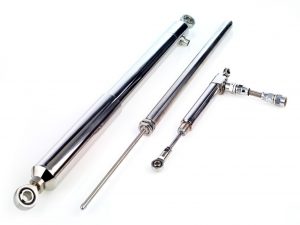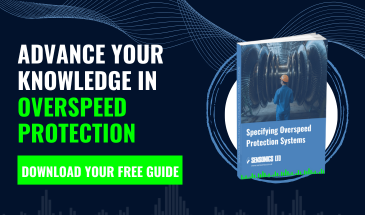Custom LVDT Displacement Transducers Meet OEM Needs
PRODUCT APPLICATION PRESS RELEASE
18th June 2020 - For Immediate Release
CUSTOM LVDT DISPLACEMENT TRANSDUCERS MEET OEM NEEDS
When condition monitoring applications require robust and reliable transducer systems and devices such as accelerometers, velocity sensors, and proximity probes, SENSONICS is the name that should spring to mind. Having the benefit of 40+ years of experience in the design and manufacture of the essential components means Sensonics has not only the range of specialized condition monitoring products but also the vital engineering and technical capability to provide custom design solutions when required.
In certain situations, our wide range of standard LVDT (Linear Variable Differential Transformer) displacement transducers may not meet the specific requirements of some applications and this is when our successful bespoke design service is ideal. Whether for a new application, replacing an obsolete product or your existing supplier cannot meet your needs, Sensonics has the technical expertise to deliver a cost-effective solution. We can guide you through the options within our standard range with customization for a form fit and function match, or develop a new design from scratch.
LVDT’s can be used for a diverse range of applications. For example; casing and cylinder expansion measurement on steam turbines, valve position monitoring, crack monitoring on critical buildings, tunnels and bridges, deformation when a structure is under load from passing vehicles and for actuator controls providing feedback of actuator position either alongside, or for high-pressure designs for OEM internal mounting. Also, bespoke designs for more specialized applications such as submersible, sub-sea, and radiation-proof.
The operational principle of an LVDT is as an electromechanical device it produces an electrical signal whose amplitude is proportional to the displacement of the transducer core. It consists of a primary coil and two secondary coils which are symmetrically placed on a cylindrical former. A magnetic core inside the coil assembly provides a path for the magnetic flux linking the coils and the electrical circuit is configured with the secondary coils in series opposition.
When an alternating voltage is introduced into the primary coil and the coil is centrally located, then an alternating voltage is mutually induced in both secondary coils. The resulting output is zero as the voltages are equal in amplitude and in 180º opposition to each other. When the core is moved away from the null position the voltage in the coil toward which the coil is moved increases due to the greater flux linkage and the voltage in the other primary coil decreases due to the lesser flux linkage. The net result is that a different voltage is produced across the secondary tappings which varies linearly with change in a core position. An equal effect is produced when the core is moved from null in the other direction, but the voltage is 180º different in phase.
LVDT’s can be operated where there is no contact between the core and extension rod assembly with the main body of the LVDT housing the transformer coils making it ideal for measurements where friction loading cannot be tolerated, but the addition of a low mass core can. Examples of this are fluid level detection with the core mounted on a float and creep tests on elastic materials. This frictionless movement also benefits the mechanical life of the transducer, making LVDT’s valuable in applications such as fatigue life testing of materials or structures. This is a distinct advantage over potentiometers which are prone to wear and vibration.
The principles of operation of LVDT’s mean they can be configured in a variety of housings depending on the degree of mechanical protection required and the use of rod end bearings, linear rolling element bearing and flexible conduit helps them to withstand the most severe environments. ENDS.
More at: https://www.sensonics.co.uk/condition-and-vibration-monitoring-sensonics-solutions/industrial-sensors/
Further details are available from Russell King, Sensonics Ltd, Berkhamsted, Hertfordshire,
UK. Tel: +44 (0) 1442 876833. Email: sales@sensonics.co.uk www.sensonics.co.uk

